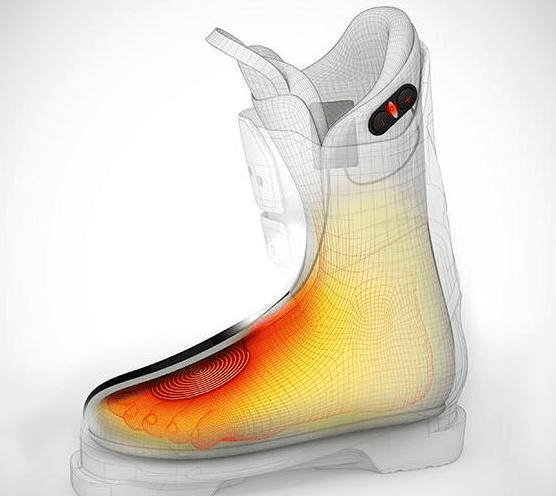Do cold toes make you quit skiing early?
Do you have trouble keeping your feet warm while skiing?
Maybe you’ve tried single use toe warmers, but didn’t like how they bunched up in your ski boots.
If you answered yes to either of the above then, like me, you probably want to invest in some electronic ski boot heaters. With today’s technology there’s no way that cold feet should keep you off the slopes. There are numerous options now for keeping your feet warm while skiing.
From the tried and true HotTronics aftermarket boot heater, to a brand-new ski boot with Bluetooth controlled heating elements, there’s a toe warming option for everyone. If you want to enjoy yourself on the slopes you don’t want to have cold feet.
Which ski boot heater is right for me?
When shopping for which heater is right for you, consider how many times a year you ski and how long each outing is. How much money are you willing to spend and for what level of comfort. Aftermarket heating elements that get added to boots are going to be much more budget friendly than a brand-new pair of heated liners. However, if you’re looking to replace an old pair of boots, consider purchasing a new boot that comes with a heated liner.
Also consider what you need from your boot heaters. Are you using the heater to take the bite off while sitting on the lift, or do you need your foot warmed on all sides? If you intend to be standing around in your ski boots a lot either coaching or teaching lessons, you may benefit from a heated liner where your foot can be surrounded by the warmth, rather than just the toes.
Aftermarket Ski Boot Footbeds
HotTronics and Therm-ic make excellent aftermarket heating elements than can be added to your liners. These products attach a heating element to the toe of your footbed inside your boot. The cord then runs outside the liner and up the back to plug into an external battery.
This is going to be your most economical option but keep in mind that this type of footbed heater will only heat your toes.
There is some level of care needed to make sure you don’t rip or crease the power cord. If going this route, you can install the heating elements yourself, however it may be easier for you to have your local ski shop install them.
Ski shops will be equipped with the proper tools for cutting and attaching the heating elements to your liners. They are also practiced in cutting into boot liners to install the heating elements properly.
Heater-Integrated Ski Boot Liners
Some boot liners are now made with the heating elements built in. This ensures a comfortable fit with no loose wires inside or outside the liner. This can either be purchased as an aftermarket liner to be used in your current shells, or as a part of a brand-new ski boot.
If you’re in the market for new boots this year, consider looking into some models that come with heated liners. Salomon, Technica and K2 all make models that come standard with the heated liners. These new liners have the battery packs built in and are equipped with Bluetooth control heat settings. Simply plug your liner into the charge cord when you’re done skiing for the day to recharge. You also no longer have to lug around the external battery clipped to the outside of your boot to stay warm. Bluetooth control lets you adjust temperature on your feet without having to bend over to do so.
Another great option is an aftermarket heated liner. Companies like Surefoot (who have high-street shops in Val d’Isere, Courchevel and Verbier) that have been making custom moulded boot liners for years also offer a heated boot liner. Therm-ic also now offers their Powerliner, a ski boot liner with the heaters integrated in.
A special foam is inserted via the tubes before they are removed leaving you with a perfect fit.
These liners either have an external battery pack or the battery built in, but all the wiring and heating elements are concealed within the liner. This is a great option if you are happy with your current boots other than cold feet. You can avoid any potential discomfort from the aftermarket heater installation and keep the same boots. Often times ski boot shells outlast the liner inside once it packs out. If you’re needing to upgrade your liners, consider a heated one next time.
Hopefully that’s helped put you on the right path to toasty tootsies, if you want to make sure the rest of your body stays warm and dry while you’re skiing then be sure to check out this guide on How to Dress for Skiing.

